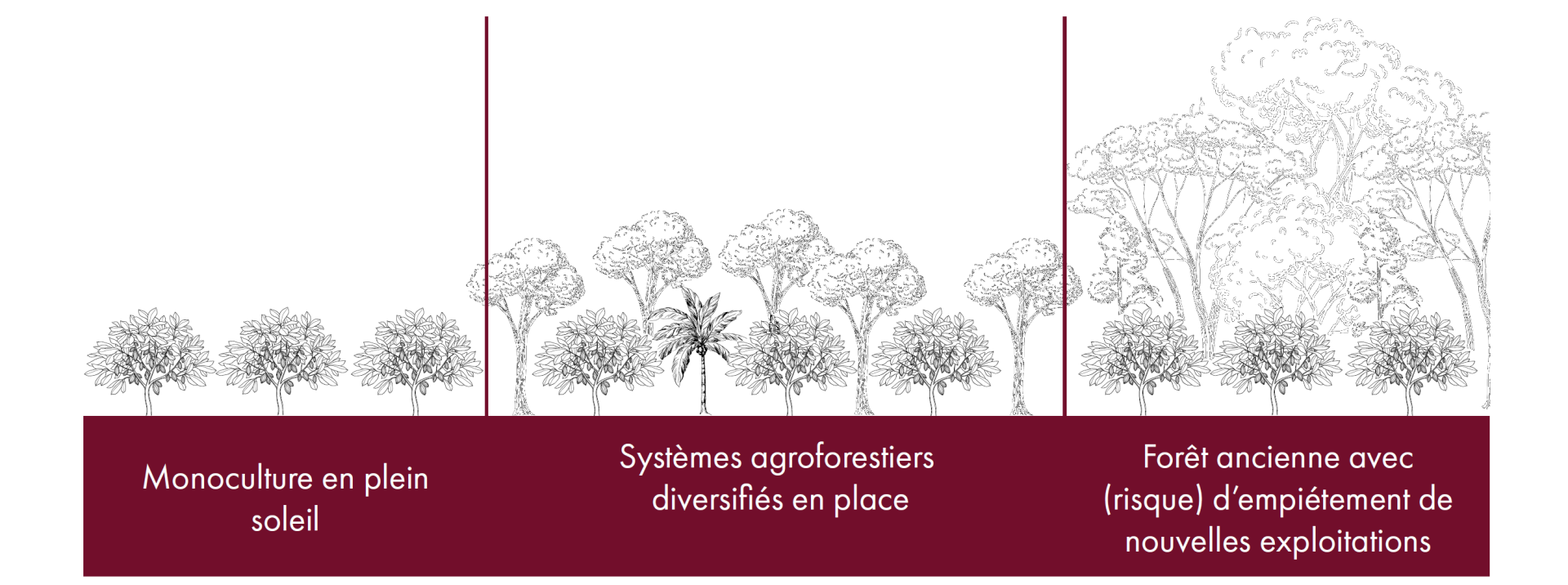

Cocoa agroforestry in West Africa - Experiences from the private sector and opportunities for collaborative action
Despite efforts to promote agroforestry in the cocoa sector, its adoption has been slow. A new publication gives insight into the strategies of six cocoa and chocolate companies to encourage agroforestry in West Africa, and offers recommendations to accelerate its uptake.
Agroforestry can provide multiple benefits, including sustainable cocoa production in the face of climate change, increasing the resilience of farmer livelihoods, and contributing to climate change mitigation and biodiversity conservation. Acknowledging these benefits, several private companies have set commitments to promote agroforestry in the cocoa sector. To better understand how these commitments are implemented, Tropenbos International, Tropenbos Ghana and Nitidae took a closer look at the approaches of six cocoa and chocolate companies operating in Ghana and Côte d’Ivoire : Cargill, CÉMOI, ETG | Beyond Beans, HALBA, Tony’s Chocolonely and Touton. By combining insights from these case studies with findings from literature, the study puts forth recommendations for companies and the broader cocoa sector to improve their agroforestry strategies.
Case studies
Annex 1. Cargill
Annex 2. CÉMOI
Annex 3. ETG|Beyond Beans
Annex 4. HALBA
Annex 5. Tony’s Chocolonely
Annex 6. Touton
The case studies show interesting differences between the agroforestry models promoted by companies, ranging from simple cocoa agroforestry to highly diverse dynamic agroforestry. Moreover, companies are using a collection of strategies to encourage and support farmers to adopt agroforestry. Some strategies focus on overcoming barriers to agroforestry adoption (e.g. land title registration), while others focus on making agroforestry more attractive to farmers (e.g. providing payments for ecosystem services). Several areas are identified where agroforestry strategies could be further strengthened, including the development of more tailored approaches to agroforestry promotion, the inclusion of farmer managed natural regeneration and further strengthening cooperatives’ agroforestry extension and support services.

Ultimately, to achieve the adoption of agroforestry at scale and to reach its full potential in contributing to resilient landscapes, livelihoods and cocoa supply chains, it is important for all actors to rally behind a vision for agroforestry and work together to achieve it. Such a collaboration would provide an opportunity to reframe agroforestry as a locally owned solution, and to take a farmer-centric approach. Suggestions are provided for what collective action for agroforestry could look like at the landscape and national level.
We invite you to read the report below to learn about what can be done to make cocoa agroforestry work at scale.

